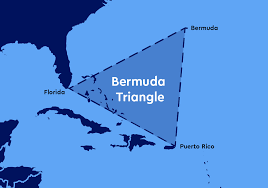India, with its vast coastline of over 7,500 kilometers, is home to several important seaports that serve as key gateways for international trade. Among these, the Jawaharlal Nehru Port Trust (JNPT) stands out as the largest container port in India. Often referred to as the “Gateway of India’s Containerized Trade,” JNPT plays a crucial role in supporting the country’s growing economy by efficiently handling millions of containers every year. In this blog, we will explore the history, infrastructure, significance, and future prospects of JNPT, along with a brief overview of other notable ports contributing to India’s maritime trade.
History and Establishment of JNPT
The Jawaharlal Nehru Port Trust, also known as Nhava Sheva Port, was inaugurated on 26th May 1989. It is located at Navi Mumbai, Maharashtra, on the eastern shore of Mumbai Harbour. The port was developed to relieve congestion at the Mumbai Port and to cater specifically to containerized cargo.
Since its inception, JNPT has grown exponentially in terms of cargo handling capacity, operational efficiency, and global connectivity. It has now become a critical logistics hub for not only Maharashtra but the entire western and northern hinterlands of India.
Strategic Location
JNPT’s strategic location near Mumbai, India’s financial capital, gives it a massive geographical advantage. It is well connected to the National Highway Network and has access to major rail corridors, enabling smooth inland transportation of goods.
The port’s connectivity to Delhi, Gujarat, Madhya Pradesh, Rajasthan, and other key industrial belts makes it a preferred choice for exporters and importers.
Infrastructure and Facilities
Over the years, JNPT has significantly upgraded its infrastructure to meet global standards. The port operates five container terminals:
-
JNPT Container Terminal (JNPCT) – Managed directly by the port authority.
-
NSICT (Nhava Sheva International Container Terminal) – Operated by DP World.
-
GTI (Gateway Terminals India) – A joint venture between APM Terminals and CONCOR.
-
NSIGT (Nhava Sheva India Gateway Terminal) – Another terminal operated by DP World.
-
BMCT (Bharat Mumbai Container Terminals) – Managed by PSA International.
Each terminal is equipped with state-of-the-art infrastructure, including Quay Cranes, RTGs (Rubber Tyred Gantry Cranes), and Automated Gate Systems. These technologies help reduce turnaround times and improve overall efficiency.
Container Traffic and Capacity
JNPT consistently handles the highest container traffic among all Indian ports. In the fiscal year 2023-2024, the port handled approximately 6.05 million TEUs (Twenty-foot Equivalent Units), maintaining its position as India’s busiest container port.
Here’s a look at JNPT’s recent performance metrics:
-
Annual Container Handling: Over 6 million TEUs
-
Vessel Calls: Around 2,000 container vessels annually
-
Berths: Deep-draft berths suitable for modern container ships
-
Storage: Extensive container yard capacity and warehousing
The port is also implementing automation and digital technologies to streamline customs procedures, real-time cargo tracking, and enhance visibility across the supply chain.
Economic and Strategic Significance
JNPT plays a vital role in India’s economy. Here are a few key contributions:
-
Handles over 50% of India’s total containerized cargo.
-
Generates significant revenue through customs duties and port fees.
-
Facilitates exports of engineering goods, textiles, pharmaceuticals, chemicals, and agricultural products.
-
Boosts employment directly and indirectly through logistics, warehousing, transport, and shipping industries.
-
Supports the ‘Make in India’ and ‘Atmanirbhar Bharat’ initiatives by promoting ease of doing business and reducing logistics costs.
Sustainability and Green Initiatives
JNPT is also leading the way in environmental sustainability among Indian ports. It has launched several green initiatives such as:
-
Solar power installations for terminal operations.
-
Electric and LNG-powered vehicles for cargo movement.
-
Shore power supply to ships at berth to reduce emissions.
-
Waste management systems and water recycling plants.
These measures align with global environmental standards and contribute to reducing the carbon footprint of maritime logistics.
Major Development Projects
JNPT is constantly evolving to meet future demand and international shipping trends. Some of the major development projects include:
-
Dedicated Freight Corridor (DFC):
-
An upcoming logistics corridor that will connect JNPT to northern India through high-speed rail.
-
It will drastically cut down transit time and cost.
-
-
Multi-Modal Logistics Park (MMLP):
-
Being developed near the port to provide integrated services including warehousing, cold storage, and value-added services.
-
-
Expansion of Port Terminals:
-
Terminal capacity is being increased to handle over 10 million TEUs annually in the near future.
-
-
Digitization Initiatives:
-
Port Community System (PCS), E-delivery orders, and RFID-based cargo tracking for enhanced transparency and speed.
-
Other Major Container Ports in India
While JNPT is the largest container port, India also has several other major container handling ports such as:
-
Mundra Port (Gujarat) – Privately operated by Adani Group, second-largest in container traffic.
-
Chennai Port (Tamil Nadu) – Major port in southern India, key for car exports.
-
Kolkata Port (West Bengal) – Important for eastern and northeastern India.
-
Visakhapatnam Port (Andhra Pradesh) – Handles bulk as well as container cargo.
However, none of them match JNPT in terms of overall container throughput, infrastructure, and international shipping connections.
Conclusion
In summary, the Jawaharlal Nehru Port Trust (JNPT) is undeniably the largest container port in India. Its role in facilitating international trade, supporting industries, and driving economic growth is unmatched. With continuous modernization, green initiatives, and expansion plans, JNPT is well on its way to becoming a world-class maritime hub.
As India aims to become a $5 trillion economy, the importance of efficient and capable ports like JNPT cannot be overstated. The port’s future growth will be pivotal in positioning India as a major player in global trade and logistics.
